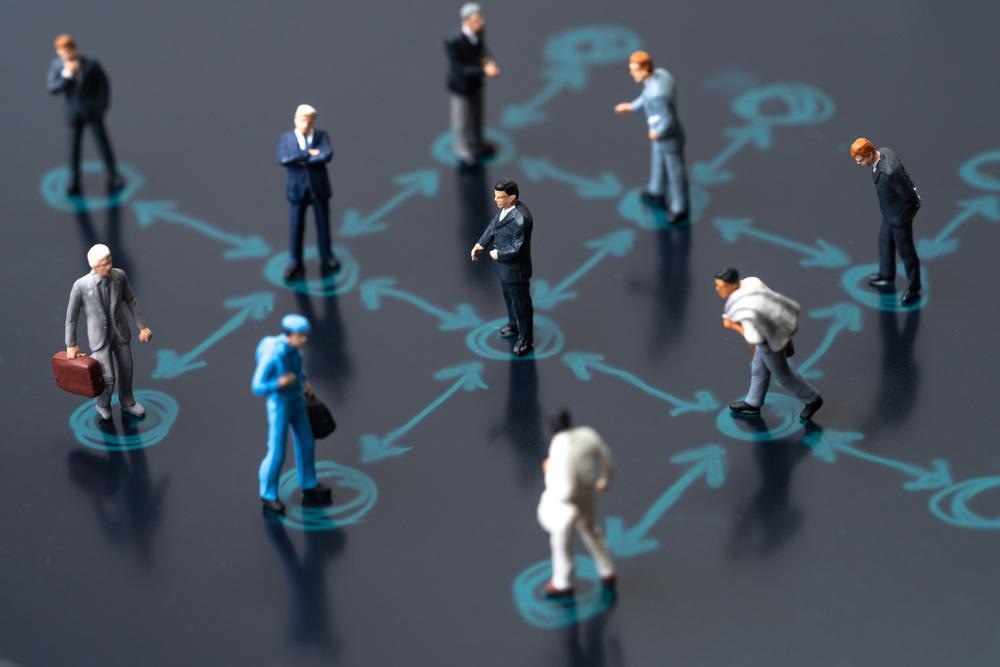Humans naturally find it hard to social distance. Naturally, we are one of the most social species on the planet, with brains specialized to process all forms of communication, from language to facial expressions. We release chemicals during skin-to-skin contact that induces feelings of love. Isolation and distance from our fellow humans, therefore, is challenging.

Image Credit: eamesBot/Shutterstock.com
Studies have shown, however, that social distancing has a vital role to play in the COVID-19 pandemic by preventing the spread of the virus. Additionally, social distancing rules established to control the current pandemic will likely be utilized to some degree to avoid the emergence of future viruses with pandemic potential. Therefore, the public must be able to carry out social distancing effectively
Fortunately, scientists have developed a new solution that utilizes wearable sensors to assist with automated proximity detection to facilitate effective social distancing.
What is Social Distancing?
Since the beginning of the pandemic, the World Health Organization (WHO) and other global health agencies have recommended or enforced rules to curb the spread of the pandemic, such as the use of face masks, frequent hand washing, the sanitization of shared spaces, and social distancing.
Research has since demonstrated the role of aerosols in the spread of the COVID-19 virus. The tiny water droplets released into the air when we breathe are laden with the virus when expelled by those infected. They can linger in the air for a considerable amount of time and are now considered the main route of transmission, rather than touching surfaces and objects that have also come into contact with an infected person.
Social distancing has an essential role in preventing the spread of COVID-19. It makes it less likely that the virus can be transmitted via aerosols as distance helps the particles spread out before they come into contact with another person
How could Sensor Technology be Incorporated into Social Distancing Practice?
Throughout the pandemic, people have often found it hard to maintain social distancing rules. Firstly, because it is unnatural, a conscious effort must be made to change behavior to comply with these rules. Secondly, people are not always aware of how far 1, 2, or 5 meters are. Smart sensors provide the opportunity to automatically track social distancing and provide real-time feedback to help them adjust their behavior.
What Sensors could be Used to Monitor and Maintain Social Distancing?
Since the start of the pandemic, many companies have developed motion sensors that can help wearers maintain social distancing. Now, a number of devices are available on the market that utilize sensors to help support these guidelines. Generally, these devices use one of four technologies: conventional ultrasonic, ultra-wideband (UWB), Bluetooth, or miniaturized ultrasonic, for example.
Sentech has launched a social distancing sensor that uses ultra-wideband (UWB) technology to accurately measure distances and vibrate, emit sound, and light up when distances of 1.5 meters are compromised. A team at IP University in Delhi, India, on the other hand, has developed a portable sensor-alarm device that uses ultrasonic technology. While all sensors work similarly in that they alert wearers when they move too close to another person, they have different benefits and drawbacks.
Ultrasonic and miniaturized ultrasonic sensors tend to have low false alarm rates, whereas UWB and Bluetooth are prone to errors. However, UWB and Bluetooth devices have a better field of view (360 degrees), whereas ultrasonic and miniaturized ultrasonic tend to be more limited, often only sensing half of this range.
What does the Future Look like for Social Distancing Sensors?
As national lockdowns lift and countries aim to return to some form of ‘normality’, social distancing sensors may be relevant to everyone. However, in industries where staff cannot work from home, such as factories, warehouses, and construction sites, they may be vitally important for years to come. It is likely that some form of social distancing will be maintained in these environments in the long term; social distancing sensors may, therefore, become an essential piece of safety equipment like safety boots and hard hats.
In general, social distancing sensors may play an important role in preventing any future pandemic. Despite this, we are yet to see how successful they may be in terms of real-world usability. It is likely that research and development will continue to enhance the capabilities and accuracy of the motion sensors that are currently in use.
References and Further Reading
Bradley, D., (2021) Ultrasonic social distancing. [online] Techxplore.com. Available at: https://techxplore.com/news/2021-09-ultrasonic-social-distancing.html
Robson, D., (2020) Evolution explains why social distancing due to covid-19 is so hard. [online] New Scientist. Available at: https://www.newscientist.com/article/mg24833080-900-evolution-explains-why-social-distancing-due-to-covid-19-is-so-hard/
Dreuning, H., (2021) Keep distance (in the workplace) with a Social Distancing Sensor. [online] Sentech. Available at : https://www.sentech.nl/en/social-distancing-sensor/
Waterson, J., (2021) BBC Covid distancing sensor devices beset by noise and fire safety issues. [Online]. The Guardian. Available at: https://www.theguardian.com/media/2021/may/30/bbc-withdraws-covid-protection-devices-over-safety-concerns (Accessed 4 October)
Bell, T., (2020) How to Use Social Distancing Sensors on Your Premise. [Online]. Irisys. Available at: https://www.irisys.net/blog/social-distancing-sensors
Disclaimer: The views expressed here are those of the author expressed in their private capacity and do not necessarily represent the views of AZoM.com Limited T/A AZoNetwork the owner and operator of this website. This disclaimer forms part of the Terms and conditions of use of this website.